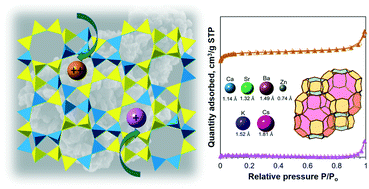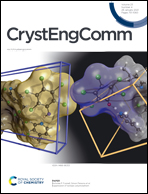Effect of mono- and divalent extra-framework cations on the structure and accessibility of porosity in chabazite zeolites†
Abstract
Chabazite (CHA), one of the most common zeolite framework types, has a remarkable capacity to accommodate a wide range of different cations within the unique CHA framework. This has led to CHA being applied extensively in ion exchange, and studied for highly selective gas sorption, most notably through a trapdoor mechanism. Here, we report the systematic study of a series of six chabazite zeolites (i.e. K-CHA, Cs-CHA, Ca-CHA, Ba-CHA, Sr-CHA and Zn-CHA) obtained by subjecting the parent chabazite (KNa-CHA) to exchange operations with cations of different valences and atomic radii. These samples were examined using numerous techniques and it was found that the differences in valence and size between extra-framework cations exert a significant effect on the abundance of these cations positioned in the framework, resulting in differing nitrogen sorption ability measured in the synthesised chabazite zeolites. These findings will help to understand how the zeolite counter-cation affects the ability of the CHA material to selectively sequester and separate gases through the use of the trapdoor mechanism.

- This article is part of the themed collection: Nanomaterials


 Please wait while we load your content...
Please wait while we load your content...